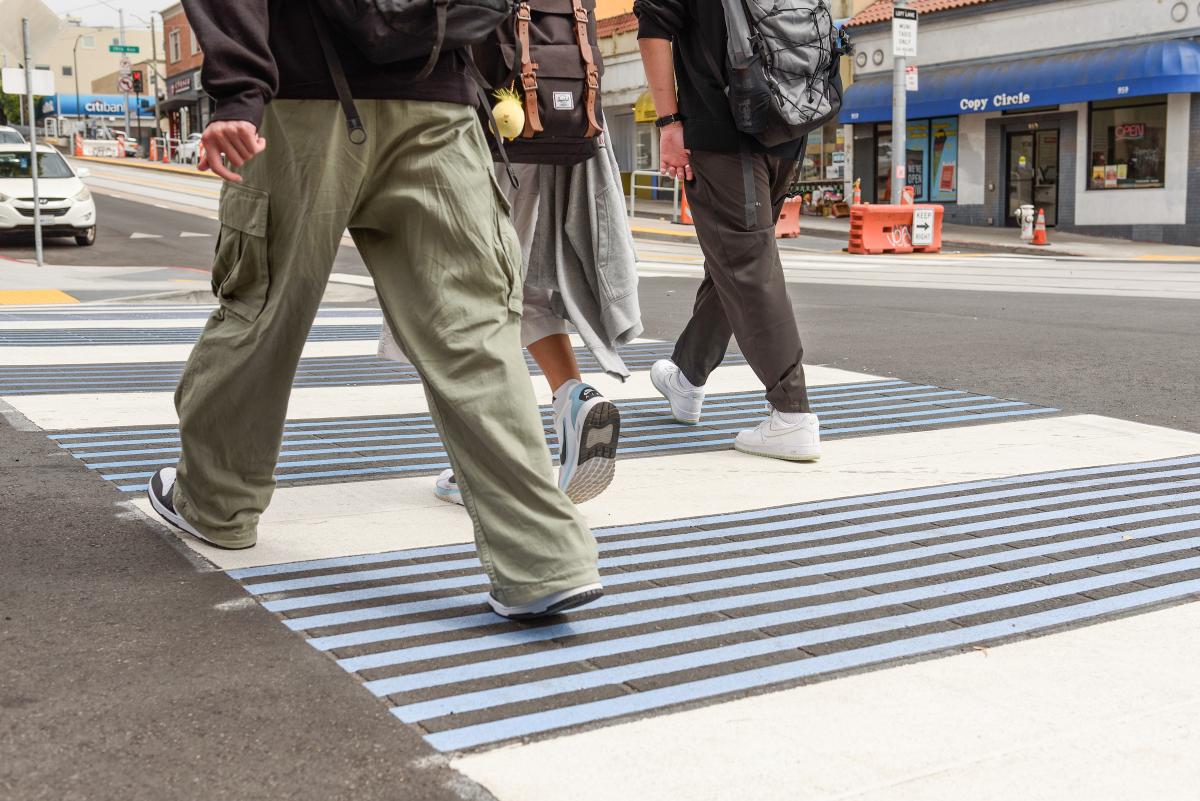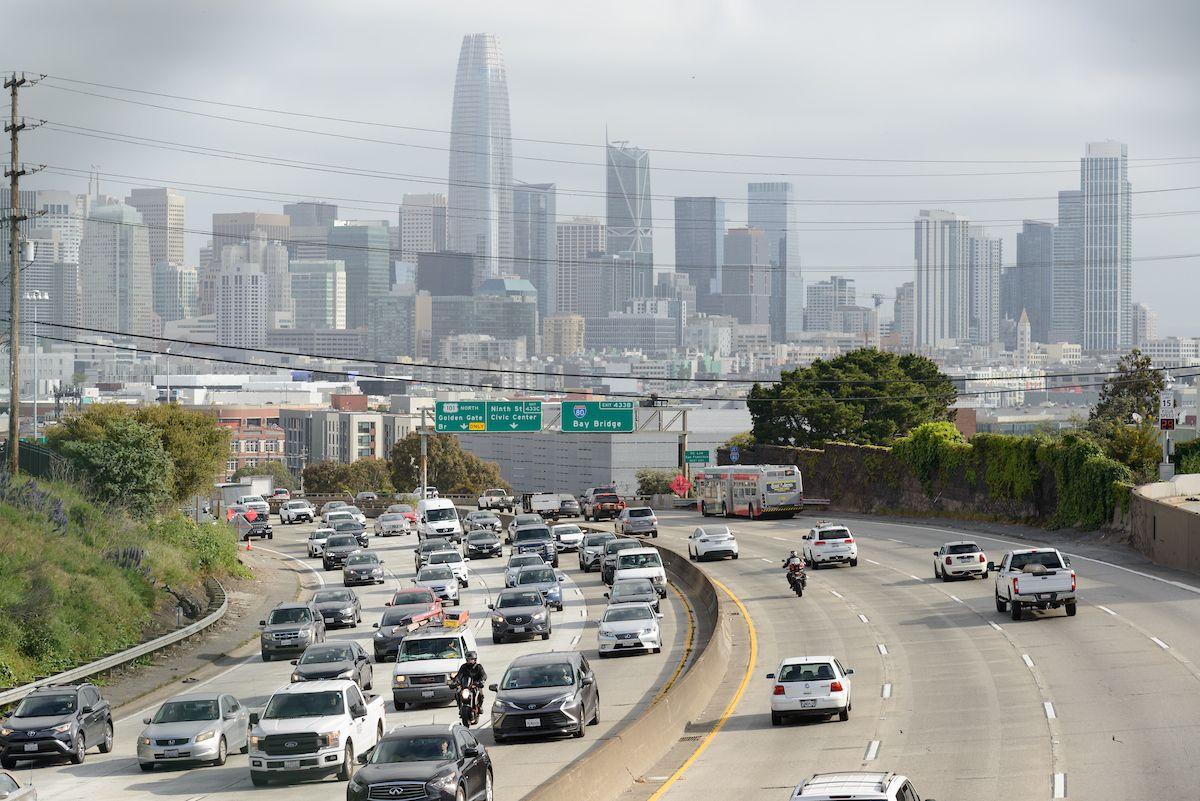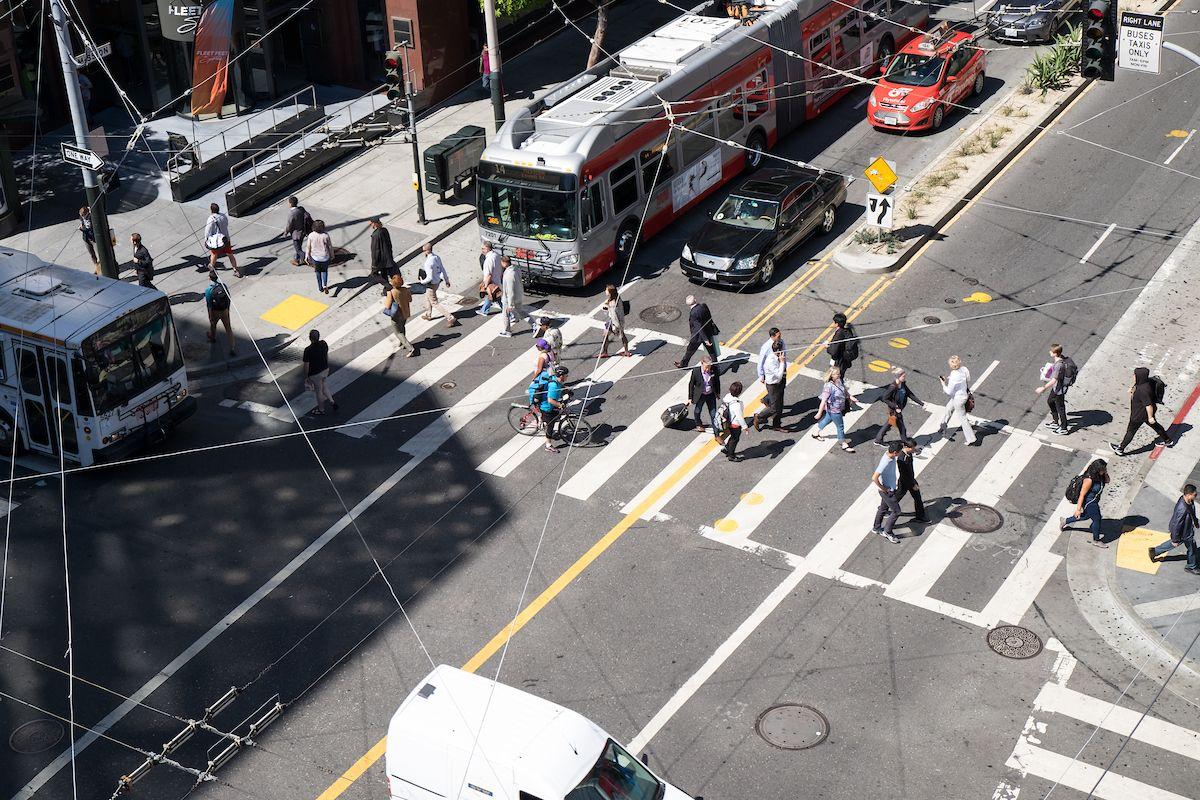
Learn how our Vision Zero outcomes compare with similar cities across the U.S.
Earlier this summer, the San Francisco Controller’s Office launched a new website on Vision Zero Benchmarking. Vision Zero is San Francisco’s policy to eliminate traffic fatalities and reduce severe injuries.
The goal of the benchmarking project was to understand how our Vision Zero outcomes compare to other U.S. cities of similar population size and density. The project included a review of Vision Zero progress in Boston, Chicago, Long Beach, Los Angeles, Miami, Minneapolis, New York, Oakland, Portland, San Francisco, San Jose, Seattle and Washington, D.C.
The benchmarking effort considered seven metrics demonstrating progress on key Vision Zero indicators or efforts:
- Annual Public Transit Trips
- Commute Methods
- Fatalities
- Injuries
- Separated Bike Lanes
- Street Network Speeds
- Traffic Citations
Where possible, data covered 2012-2022.

See how San Francisco compares to other cities when it comes to commute methods, bike lanes and more.
Key findings
- No peer cities have zero fatalities. Even though most of the peer cities have their own Vision Zero initiatives, no cities have been able to achieve the goal of zero fatalities.
- San Francisco has fewer fatalities per 100,000 residents than nearly half of its peer cities. In almost every year, San Francisco has had fewer fatalities per 100,000 residents than Miami, Portland, Chicago, Los Angeles and Long Beach. For example, in 2020, San Francisco had half as many fatalities per 100,000 residents as Los Angeles and three times fewer than Miami.
- Bicyclist fatalities in San Francisco have declined since 2018. This may be due in part to changes in infrastructure. It could also be shaped by changes in behavior following the pandemic. As of 2022, San Francisco has one of the highest rates of separated bike lanes. About 3% of our streets have separated bike lanes, a rate similar to New York’s.
- Apart from a slight uptick in 2021, bicyclist injuries per 100,000 residents in San Francisco have declined since 2014. In 2014, 75 San Franciscan bicyclists per 100,000 residents were injured compared to 45 in 2022.
- San Francisco has fewer injuries per 100,000 residents than nearly half of the California cities reviewed in the analysis.* San Francisco has had fewer injuries per 100,000 residents than Oakland, Long Beach and Sacramento. For example, in 2020, San Francisco had half as many injuries per 100,000 residents than Sacramento. *The way that traffic injuries are reported can vary from state to state due to state traffic law. This metric focused on California cities for a consistent data source.

Find out how transit use can impact road safety – and how our rates compare to other cities’.
- San Franciscans use public transit at high rates. Higher use of public transit can help to reduce the number of people using cars. According to an APTA study, fewer cars on the road lead to fewer crashes, injuries and fatalities among all types of people traveling on the road. San Francisco's rate of commuting by transit is among the highest in the peer cities, at 17% in 2022. Boston, Washington, D.C. and Chicago have similar rates. Only New York City is notably higher, at 44%.
- There is a large difference across cities in the percentage of streets with a speed limit of 20 mph. Research from the American Automobile Association (AAA) Foundation for Traffic Safety shows that a pedestrian hit by a car going 20 mph has a 90% chance of surviving the collision. For Washington, D.C., Seattle, Portland and Minneapolis more than 60% of their streets have a speed limit of 20 mph. These cities have a default speed of 20 mph, which means that unless otherwise posted the speed limit is 20 mph. The next closest are San Francisco and New York City, with between only 5-6% of the streets at 20 mph.
- California legislation has a major impact on a city's ability to set speed limits. Until recently in California, state laws limited cities’ ability to change speed limits. Assembly Bill 43 (AB 43) came into effect in 2022, allowing cities to lower speeds by 5 mph in key business districts. In 2024, cities are now allowed to lower speeds by 5 mph in “safety corridors.” Since AB 43's implementation, San Francisco reduced the speeds for 46 miles of streets as of April 2024.
For more key takeaways from the Vision Zero Benchmarking project, please visit the Controller’s Office’s Vision Zero Benchmarking website. The city may consider updating these dashboards when there is another year or two of data available to review.